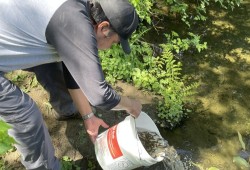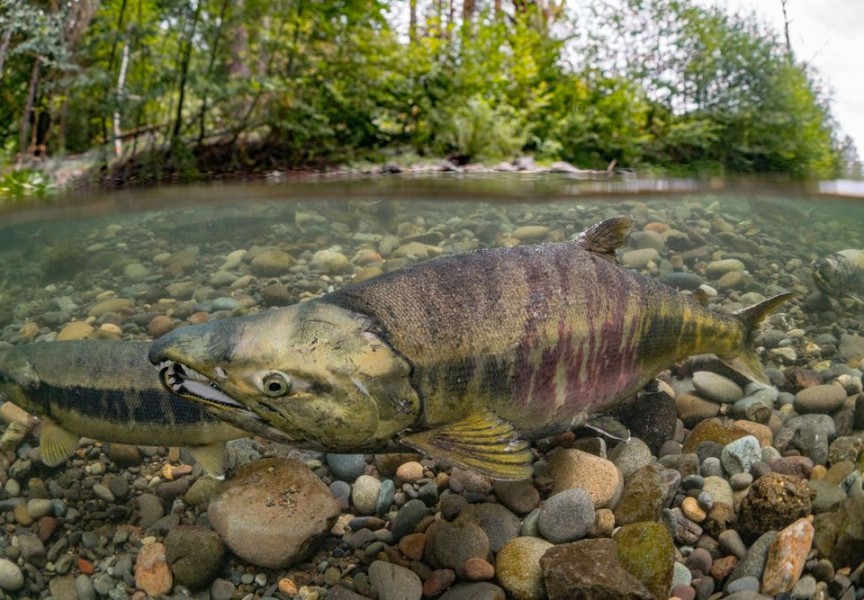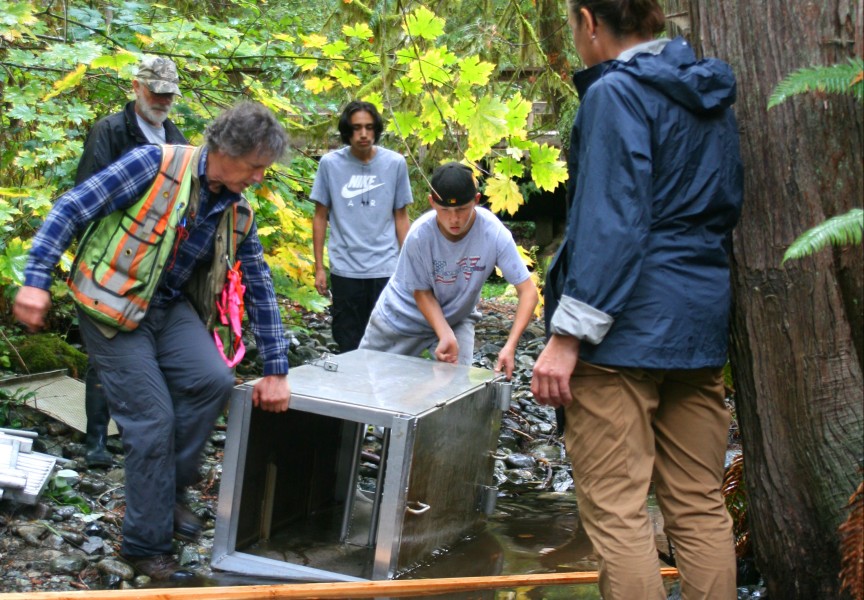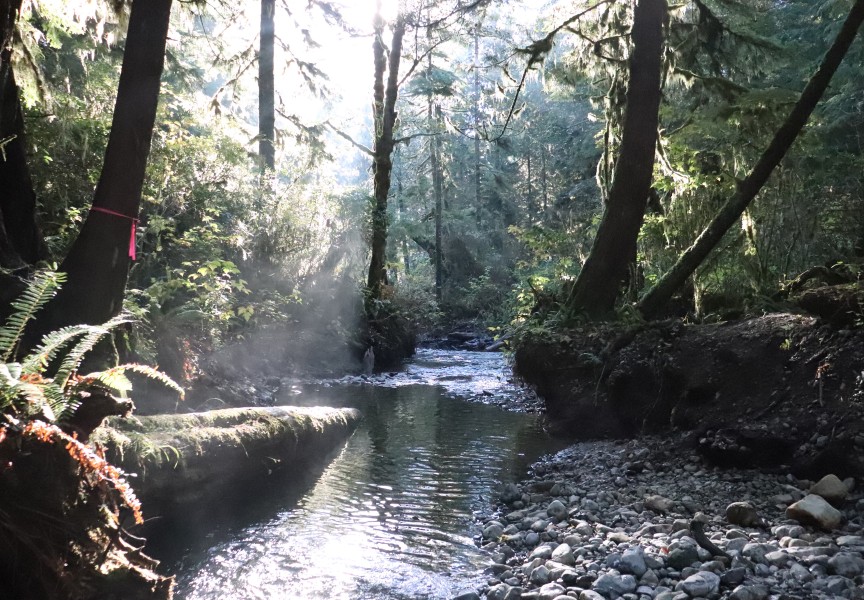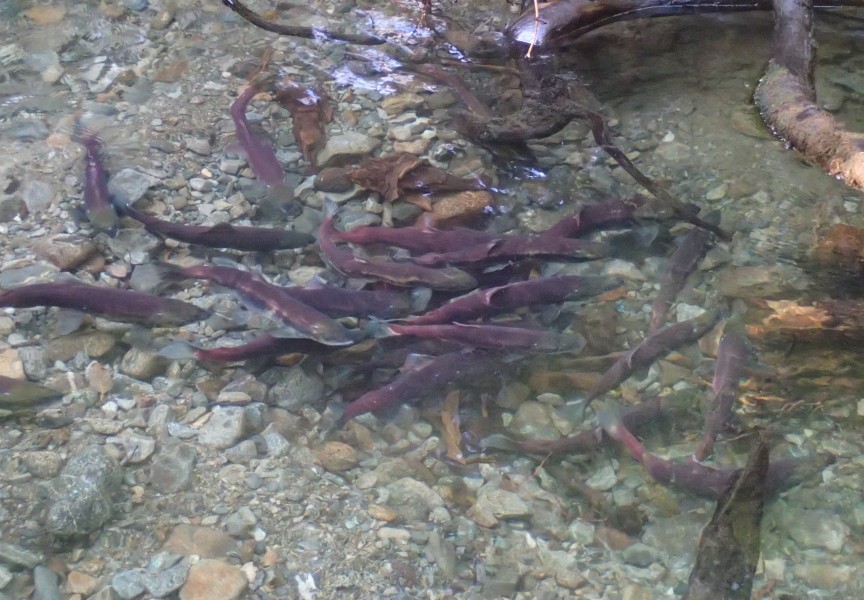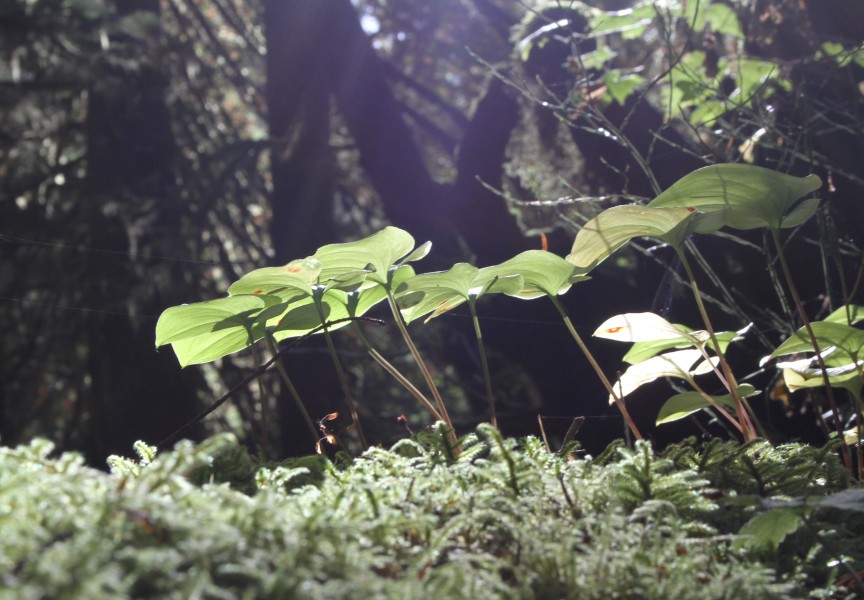After seeing weather setbacks, including weeks of extreme drought and freezing winter temperatures, the Sugsaw Hatchery recently saw the release of chum salmon into Sugsaw Creek and coho salmon into Pachena River this spring.
Throughout autumn, droughts among the coast impacted the spawning season. For Sugsaw hatchery, all of their systems were affected.
“Our fish weren't able to swim upstream at all,” said Amelia Vos, Lands and Natural Resource Operations manager for Huu-ay-aht First Nations.
Due to lack of rainfall and low water levels, salmon were held in estuaries or in other areas in the marine environment, such as in Sugsaw Creek, said Vos.
“[They] were extremely delayed in maturation for spawning because of those conditions,” she said.
When rain arrived, the spawning occurred all within one week, said Vos. The salmon were fragile due to the stress incurred from environmental conditions caused by the drought.
“For hatchery operations, it was really tough to be capturing the fish effectively,” she explained.
Due to the stressful conditions of the drought, Vos said the hatchery saw a lower productivity from the eggs and sperm of the salmon.
“We had lower survival rates in our eggs than we typically do,” she said.
Almost immediately after, at the end of November and throughout December, a cold spell hit which would also impact the hatchery.
Vos explained that cooler conditions can be healthy for egg development, slowing down their embryonic process which allows the fish to grow more effectively. However, on Christmas Eve and Day the hatchery was dealing with frozen pipes and compromised water flow.
“The fish eggs weren't receiving fresh water and some of their water was freezing,” said Vos.
The team worked promptly to repair the water flow and temperatures and were successful in their efforts, but they were concerned that the cold would impact survival.
The eggs hatched into alevin and grew into fry that they recently released into Sugsaw Creek and Pachena River, said Vos.
“The fish were super healthy and happy and fat,” said Vos, giving credit to a veteran fisheries technician, Cliff Nookemus.
“The Huu-ay-aht Nation, when they started the Sugsaw creek hatchery, we're very proud and motivated to bring back abundant healthy salmon stocks to their land,” said Vos.
Vos said that the hatchery takes a conservation approach. However, in Sugsaw Creek, since they’ve seen significant improvement in “at sea survival,” they’ve transitioned to a “harvest target” approach which gives Huu-ay-aht citizens the fishing opportunities.
For the Pachena River, the hatchery has been focused on conservation goals that restore the coho return.
In partnership with Nitinat River Hatchery, the team also released chinook from Sarita River.
“We are seeking to make the Sarita River an indicator stream, and we manage that stock in a really intensive way,” said Vos. “The bigger facility with more scientific opportunity was the right choice for us there.”
“We currently have found a really neat approach to fisheries management…that allows for the citizens to have an annual economic opportunity on that river - as well as we're rewilding the river,” continued Vos. “That's really where hatcheries, to me, embed in [Huu-ay-aht] ancient spirit, modern mind, and back into our sacred principles.”




